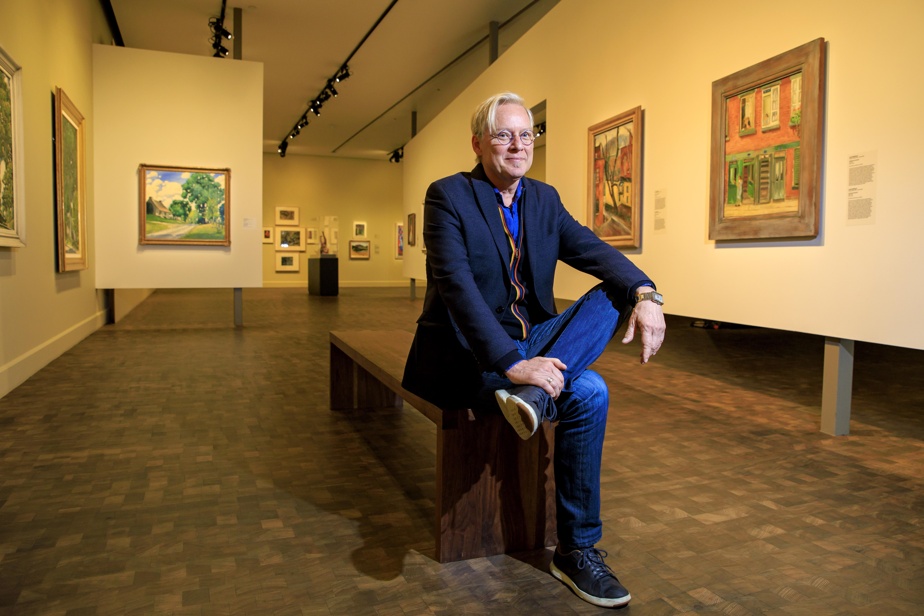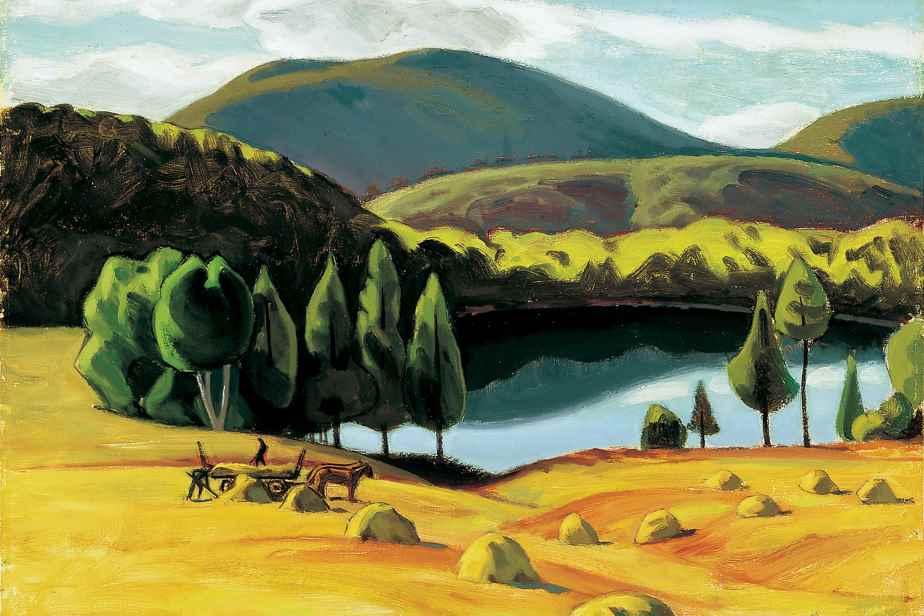In its Claire and Marc Bourgie Canadian and Quebec art pavilion, the Montreal Museum of Fine Arts (MMFA) has reorganized the section devoted to the Contemporary Art Society of Montreal (SACM), this association of English-speaking and Francophones who promoted modern art from 1939 to 1948. The space reflects this brief but distinguished period in the history of Montreal art.
Why take an interest in this ephemeral Contemporary Art Society founded by the painter John Lyman when the sound of Nazi boots began to spread fury, violence and death throughout Europe?
First, because it is a period in its own right in the history of art in our country, as were those of the Group of Seven (1920-1932) or the Beaver Hall Group (1920- 1923).
Back in 1931 from a long stay in Europe, John Lyman was convinced that modern Canadian art should take a different avenue from the figurative Canadianness typical of the Group of Seven and take more account of the plastic form, and this, in a complete freedom of expression. It was in this spirit that he founded the Contemporary Art Society in 1939.
audacity
Jacques Des Rochers, curator of Quebec and Canadian art (before 1945) at the MMFA for 20 years, wanted to take into account the museum’s acquisitions, both recent and old, to reorganize this section of the first floor Paths of modernity. “In our collection, we have more works than I can show from this period, but all the same, we have a beautiful corpus that allows us to talk about this Contemporary Art Society,” he says.

PHOTO ALAIN ROBERGE, THE PRESS
Curator Jacques Des Rochers
The section begins with trees, a painting by Fritz Brandtner – whose works can currently be seen at the Musée d’art de Joliette thanks to the fine exhibition by Esther Trépanier – who was the secretary of the Contemporary Art Society. Then, a very beautiful little painting by Lyman, Haymaking near the lakewhich represents the region of Saint-Jovite.
A work on color and form.
Jacques Des Rochers, curator of Quebec and Canadian art (before 1945) at the MMFA, about Haymaking near the lake
The Contemporary Art Society had brought together English-speaking and French-speaking Montreal artists, of both sexes, but also of Catholic, Anglican and Jewish faiths. An eloquent gesture of openness at a time when anti-Semitism was exploding in Europe and also flourishing in Quebec. This audacity, then welcome as much as necessary, is illustrated by a magnificent self-portrait by Montreal artist and teacher Moe Reinblatt.

PHOTO CHRISTINE GUEST, PROVIDED BY THE MMFA
Self-Portrait with Green Hat, 1940, Moe Reinblatt (1917-1979), oil on canvas. MMFA Collection.
The section includes two works on paper by Pierre Gauvreau, a gouache by Jean-Paul Mousseau, a watercolor by Riopelle from 1946, a beautiful oil, plaster and terracotta by Charles Daudelin, as well as a recent acquisition, Interiorfrom 1939, by Goodridge Roberts (1904-1974).

PHOTO ALAIN ROBERGE, THE PRESS
Two works by Charles Daudelin (left) and a terracotta by Louis Archambault, right
One part of the section we particularly liked. We can compare two portraits of Gabrielle Borduas. One, unpublished, was made by her husband in 1940, when he was vice-president of the Society, and the other, by Louise Gadbois, is a canvas that Paul-Émile Borduas had acquired. Two very different styles of painting at Borduas and Gadbois, but the portrait by Louise Gadbois is, let’s face it, our favorite!
pictorial journey
Two still lifes painted in the same period also illustrate the effect of European travel for Canadian artists of the time. Alfred Pellan, back in Paris, painted a magnificent still life in 1942, of renewed modernity when compared to that of Borduas. “Pellan left its mark on the entire artistic scene here,” says Jacques Des Rochers. However, a few years later, it was the Automatistes who took center stage with Global denialwhile eye prismthe manifesto of Jacques de Tonnancour, Albert Dumouchel and Pellan, no doubt too soft, remained behind the scenes.

PHOTO ALAIN ROBERGE, THE PRESS
To the left, Still life (Fruits and leaves)a Borduas oil, and on the right, Still life with a tiled tableclotha painting by Pellan
Having presented a dozen exhibitions (including five at the Art Association of Montreal, the ancestor of the MMFA), the Contemporary Art Society will have had up to 62 members. Artists, but also collectors and art professionals, such as historian and critic Maurice Gagnon. The Society died a beautiful death in 1948. It nevertheless succeeded in energizing the Montreal art community during the Second World War, putting a large number of young artists in the stirrup, at a key moment in our history. artistic history. A great initiative, therefore, to redevelop this very useful section for art lovers. Hopefully it can grow significantly in the years to come.
